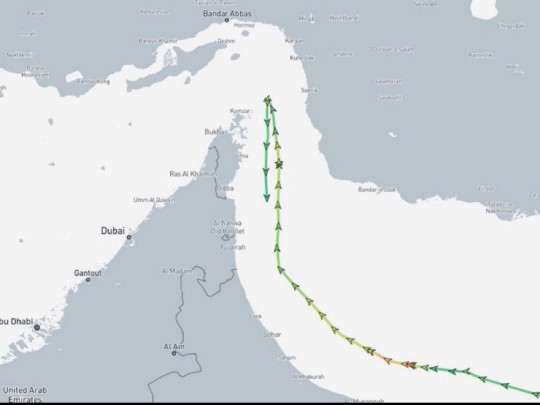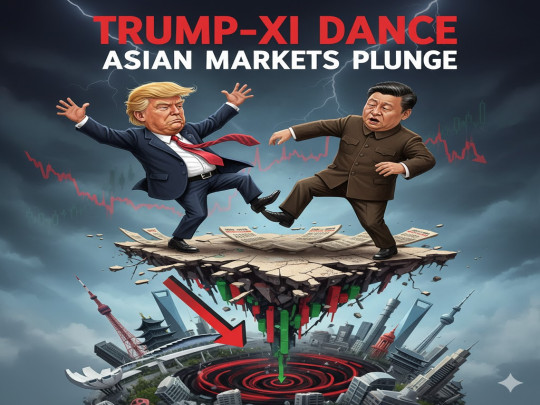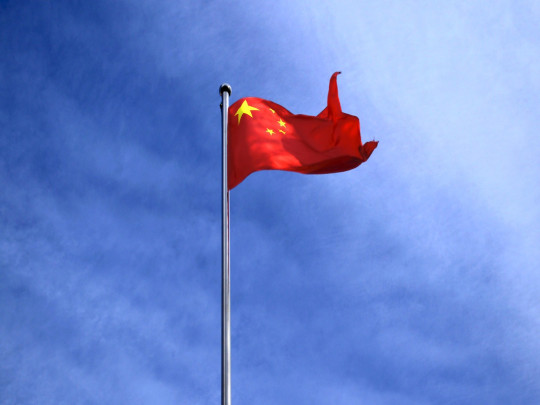Strait of Hormuz Crisis: Iran's Bold Move Signals Global Oil Risk as Ship’s Sudden Turn Sparks Alarm
Iran’s parliament votes to close the Strait of Hormuz after U.S. strikes on nuclear sites, risking disruption of 20% of global oil supply. A ship’s sudden turn sparks fears of escalation. Here’s what it means for global markets and security.

At 9:15 AM ET, satellite and maritime tracking platforms captured a striking event: a vessel in the Strait of Hormuz made a sudden 180-degree turn. This maneuver instantly sparked viral chatter across social media, coinciding with major geopolitical news—Iran’s parliament had just passed a bill to close the Strait of Hormuz, a critical chokepoint for global oil. The last time such a step was taken: 1972.
According to the U.S. Energy Information Administration (2022), approximately 20 million barrels of oil—about one-fifth of global daily consumption—transit through this 21-mile-wide passage each day. Iran's latest move could trigger a seismic disruption in global energy markets.
A Chokepoint with Global Consequences
The Strait of Hormuz, a narrow maritime corridor between Iran and Oman, is the most important oil transit route in the world. Any effort to close or disrupt it could lead to immediate oil price spikes, economic tremors, and rising tensions across the Middle East and beyond.
On June 22, 2025, the Iranian parliament voted to close the strait in direct retaliation to U.S. airstrikes on Iranian nuclear facilities. Although the law still requires approval by Iran’s Supreme National Security Council, the intent behind the legislation sends a clear message: Tehran is prepared to weaponize geography.
The Viral Ship Turn: What Really Happened?
The image of a vessel executing a sharp turn lit up social media platforms, particularly X (formerly Twitter). Many interpreted the move as an immediate reaction to the parliamentary decision—possibly the beginning of Iran’s plan to enforce closure.
However, maritime experts quickly offered a more grounded explanation. The narrow shipping corridor—only 2 miles wide—is unsuitable for such maneuvers by large oil tankers due to their size and draft. The ship in question was likely a smaller patrol or cargo vessel, reacting either to new orders or increased military presence.
“The Strait’s safe lane is just two miles wide. No tanker can turn like that on a dime. This was almost certainly a smaller craft—perhaps a patrol boat reacting to updated guidance.”
— Maritime analyst, X
Historical Echoes: Tanker War and the U.S. Navy
Iran’s threats to close the strait aren't new. During the 1980s Iran-Iraq Tanker War, both nations attacked oil shipments, and Iran made repeated threats to shut down the Strait of Hormuz. However, these efforts were met with swift international intervention.
Today, the U.S. Navy’s Fifth Fleet, headquartered in Bahrain, maintains a robust presence in the Gulf precisely to prevent such disruptions. Analysts agree that a sustained closure is unlikely, given the overwhelming force the U.S. and its allies could deploy in response.
“The U.S. has amassed a massive military presence in the Gulf. Any move by Iran against the strait would almost certainly trigger a significant military response.”
— Eurasia Group Analysts
Economic Fallout: Crude Oil, LNG, and Markets on Edge
A partial or full closure of the Strait could severely affect the export routes of Saudi Arabia, UAE, Iraq, and Qatar—countries that depend on the passage for both oil and LNG exports. Analysts from Goldman Sachs and Rapidan Energy have warned that oil could surge well above $100 per barrel if flows are disrupted for any extended period.
The U.S. Secretary of State has urged China, one of Iran’s largest oil customers, to pressure Tehran to reverse course. Washington has described Iran’s move as “economic suicide,” noting that Tehran’s own economy relies on the strait for imports and exports.
Political Theater or Military Threat?
While the Iranian parliament’s vote is a strong geopolitical statement, the operational feasibility of shutting down the strait remains questionable. Final authority lies with the Supreme National Security Council, which must weigh severe risks:
-
Retaliation by Western militaries
-
Sanctions and international condemnation
-
Self-inflicted economic collapse
Some observers believe this is a calculated show of strength, rather than a signal of immediate confrontation. Targeted harassment of commercial shipping, not a complete blockade, is a more likely short-term outcome.
The Global Reaction: From Diplomacy to Defense
In response, U.S. diplomatic and military channels are mobilizing. Secretary of State Marco Rubio called on Beijing to intervene, given China’s heavy dependence on Gulf oil. Meanwhile, Vice President JD Vance made a stark assessment:
“Closing the channel would be economically suicidal for the Iranians. Their entire economy runs through the Strait of Hormuz. If they want to destroy their own economy and cause global disruption, that would be their decision.”
Expect increased NATO and Gulf naval patrols, as well as greater satellite surveillance of vessel movements in the region.
Conclusion: Uncertainty Rules the Waters
The 9:15 AM ship turn may not signal the beginning of an actual strait closure, but it has crystallized a larger concern: a new flashpoint is emerging in the Middle East, and the global energy supply is at risk.
As the world awaits Iran’s final decision, markets, militaries, and policymakers are preparing for all scenarios. A temporary or partial shutdown could still have outsized effects on oil prices, shipping costs, and regional stability.
The coming days may determine whether this is another bluff in Tehran’s long history of brinkmanship—or the opening salvo in a broader conflict with global repercussions.



